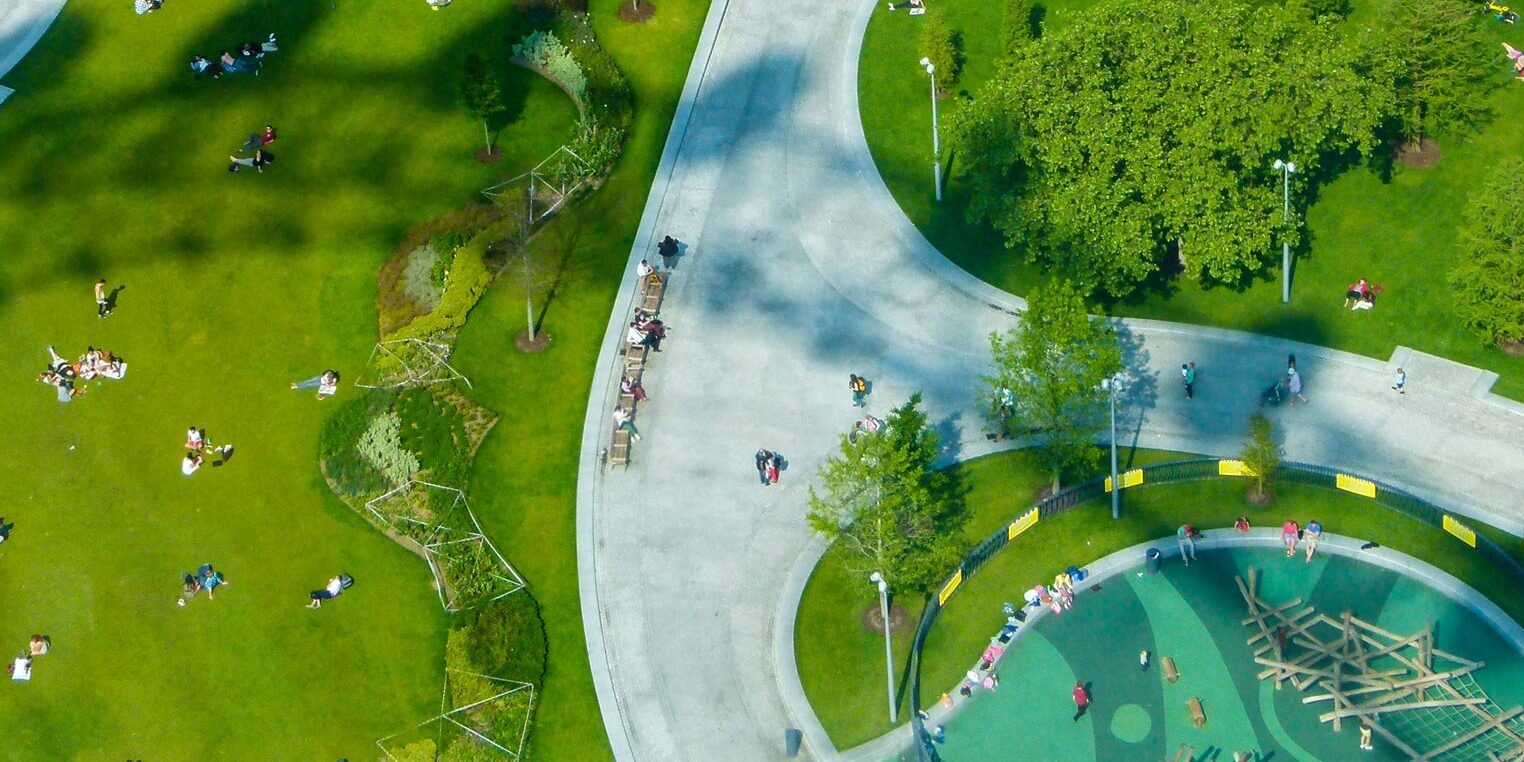Lighting Considerations for Outdoor Third Space Destinations
Nearly two years after the global pandemic, behaviors related to space and public social settings continue to evolve. Numerous studies indicated that we are much more aware of being too close to other humans, especially strangers or large crowds. Still, the same trends in architecture and landscape design indicate a growing demand for more places designed to encourage social collaboration and creativity.
The concept of “third space” is not new to sociology. Still, it has become a buzzword to define an intentionally designed area that invites friends and groups to spend time together in a low-stress, adaptable environment, notably away from work and home. In 1989, sociologist and author Ray Oldenburg published “The Great Good Place,” the first of several books dedicated to promoting cafes, bars, parks, and community centers, which he contended are crucial for fostering social connections, community cohesion, and civic engagement.
Connecting face-to-face in urban greenspaces
Increasingly, and maybe somewhat related to the pandemic, third spaces are increasingly outside. This urban trend toward more green space can be found in many American cities, both large and small. The integration of parks, pathways, and intentional use of reclaimed commercial or industrial property for community gathering spaces are all examples of third spaces.
This concept highlights the significance of social connection, personal well-being, and community engagement in contemporary society, whether in physical environments, psychological states, or sociocultural contexts. A study published in the National Library of Medicine in 2023 found that the physical presence of communicating individuals is essential for developing interpersonal relationships. The same study also stated that face-to-face contact outside the home impacts an individual’s well-being.
Streetscape lighting products beautify the third space
When it comes to the design of these outdoor third spaces, the area should be inviting, safe, and memorable. The personality of a location can make it become a destination, or it can do the opposite and discourage use by the community.
Landscape and area lighting can make all the difference in how an individual perceives the safety and desirability of an outdoor third space. Lighting designs and fixtures that incorporate and highlight the natural features of the space will beautify the area both during the day and after sundown. Poorly designed landscape and area lighting can create glare, hot spots, and visual discomfort while creating unsafe shadows and dark spots.
Attention to detail is essential when designing an outdoor third space, such as a neighborhood walking path, urban city center, or community park. Coordinating lamp poles, signs, or bollards contributes a sense of style and class in a space that encourages repeat visits, group gatherings, and memorable experiences. Adding post-top finials or caps and decorative bases to design projects provides the finishing details to enhance the entire streetscape or environment.
Decorative poles, caps, and bases enhance the user experience
Beyond the top of the light pole or signpost, adding a decorative base adds even more design detail that compliments the surrounding environment. Bases not only complete the architectural look of the project but also add protection and durability to the street sign poles, lamp posts, and mailbox units. Covering the base of the pole reduces water and debris build-up from around the pole’s ground entry point and protects any hardware from exposure or tampering. Post caps, finials, and decorative bases are the details that turn mediocre design projects into beautifully aesthetic ones that help make your third space memorable.
Connect with the professionals at Brandon Industries to discuss your next outdoor third space project.








